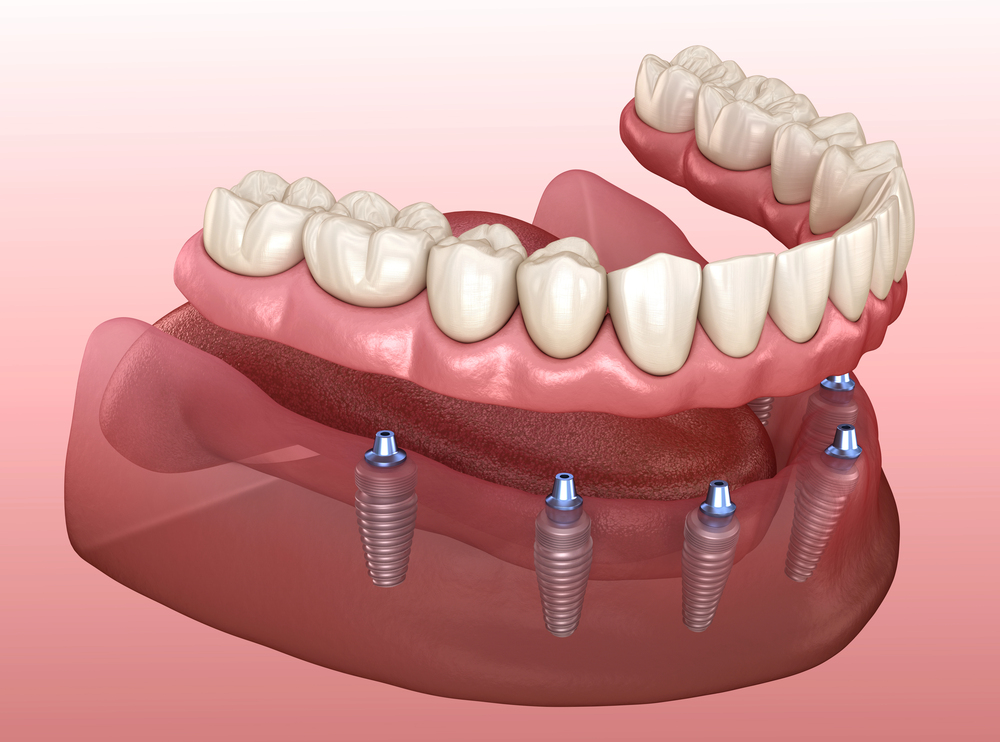If you’re wondering what options are available to make dentures more comfortable for patients, you’re not alone. Denture comfort is a common concern among patients and practitioners alike. Fortunately, prosthodontics has seen remarkable advancements in recent years.
At Implant Attachments, we understand that patient satisfaction hinges on comfort, security, and confidence in their prosthetic solutions. That’s why we offer top-tier products to dentists who want to provide their patients with superior comfort and functionality. Learn more about our products on our website, or call our team at (940) 784-3559 for information and assistance.
From implant-supported designs to digital fabrication and advanced soft liners, dentists now have multiple tools to enhance fit, stability, and overall comfort. This article explores the top solutions backed by clinical evidence to address this vital question: What options are available to make dentures more comfortable for patients?
Implant-Supported Dentures: Improved Retention and Stability
One of the most transformative solutions available today is the use of implant-supported dentures. For patients with conventional dentures that slip or cause sore spots, dental implants offer secure retention and improved chewing function. Typically, two to four implants placed in the jawbone anchor a removable overdenture, significantly reducing mobility during speech or mastication.
A 2016 systematic review confirmed that implant overdentures outperform traditional dentures in terms of comfort, function, and patient satisfaction. They also noted improvements in patient quality of life and oral health-related behaviors.
Therefore, when evaluating what options are available to make dentures more comfortable for patients, clinicians should strongly consider offering implant-supported solutions as a first-line treatment for eligible candidates.
Digital Dentures: Enhanced Precision and Fit
CAD/CAM technology has revolutionized the way prosthodontists design and fabricate complete dentures. Digital dentures offer unmatched precision, often reducing sore spots and adjustment appointments. This is due to the digital scanning and milling process, which ensures a more accurate adaptation to the patient’s soft tissues and anatomy.
In a 2022 comprehensive review, researchers found that CAD/CAM dentures improve retention, patient satisfaction, and fabrication speed. For individuals asking what options are available to make dentures more comfortable for patients, digital dentures represent a high-tech, low-error alternative to traditional techniques. This method is especially beneficial for first-time denture wearers or those transitioning from poorly fitting appliances.
Soft Liners and Relining Procedures
Not all discomfort stems from poor fabrication. Oftentimes, changes in oral tissues due to bone resorption cause dentures to loosen over time. In such cases, soft liners and relining procedures can drastically enhance comfort.
A soft liner is a cushion-like material placed inside the denture base to absorb pressure and reduce irritation. These materials are especially helpful for patients with thin mucosa, bony ridges, or compromised oral anatomy.
Silicone-based liners effectively reduce trauma to soft tissues while improving prosthesis tolerance. When determining what options are available to make dentures more comfortable for patients, relining offers a practical and cost-effective solution without needing to fabricate a new prosthesis entirely.
Denture Adhesives: Added Security and Confidence
While adhesives are not a long-term fix for poor fit, they can offer short-term relief and psychological comfort. For patients struggling with minor mobility or those undergoing adjustments, denture adhesives provide an additional layer of retention. They are particularly helpful in the lower arch, where anatomical limitations often make suction more difficult.
Modern adhesives can improve chewing confidence and minimize food particle infiltration beneath the denture. For those exploring what options are available to make dentures more comfortable for patients, recommending high-quality adhesives may help bridge the gap between fabrication and follow-up appointments.
Advanced Denture Base Materials
Traditional acrylic dentures are effective but not always the most comfortable, particularly for sensitive patients. New flexible denture base materials – such as thermoplastics and nylon – offer greater elasticity and adaptability to oral tissues. These materials can better absorb functional stress and reduce sore spots, especially in patients with irregular ridges or atrophic jaws.
Although these materials are not suitable for every case due to limitations in repair and relining, they provide an answer to what options are available to make dentures more comfortable for patients when comfort outweighs rigidity or longevity concerns. The choice should be tailored to the individual’s oral anatomy, functional needs, and aesthetic goals.
Patient Education and Maintenance Protocols
Comfort doesn’t depend solely on fabrication – it also relies on patient compliance. Proper education on insertion, removal, and hygiene is essential. Many issues stem from patients not understanding how to care for their dentures, resulting in unnecessary irritation, staining, or microbial buildup.
Routine follow-ups also play a crucial role. As the alveolar ridge resorbs over time, the fit changes, often requiring relining or even replacement. When discussing what options are available to make dentures more comfortable for patients, clinicians must emphasize long-term maintenance as part of a successful treatment plan. Empowering patients with knowledge reduces complications and increases satisfaction.
Psychological and Functional Adaptation
Some discomfort is psychological in nature. Adapting to dentures – especially for first-time users – requires time and neuro-muscular retraining. Speech changes, altered taste, or gag reflex sensitivity are common early challenges. Dentists can help patients overcome these obstacles with exercises, desensitization techniques, and positive reinforcement.
Understanding that adaptation is part of the comfort equation helps reframe the question of what options are available to make dentures more comfortable for patients. In these cases, addressing the emotional and functional learning curve is just as important as refining the prosthesis itself.
Customizing Treatment Plans for Individual Needs
No two patients are alike. A successful approach to denture comfort must begin with a thorough evaluation of the patient’s oral anatomy, history, and expectations. A combination of treatments – such as implant-retained prostheses, soft liners, and digital fabrication – often yields the best outcomes. Clinicians should remain flexible and collaborative when planning care.
By customizing the plan, providers ensure the most effective solution to the common question: What options are available to make dentures more comfortable for patients? Whether it’s a single adjustment or a full-mouth rehabilitation, every patient deserves a path toward lasting comfort.
ImplantAttachments.com – Where Innovation Meets Individualized Care
Understanding what options are available to make dentures more comfortable for patients requires a multifaceted approach that blends cutting-edge technology with empathetic clinical care. From implant-supported overdentures and CAD/CAM precision to advanced materials and patient education, modern dentistry has more tools than ever to improve denture comfort.
At ImplantAttachments.com, we’re committed to staying at the forefront of prosthodontic innovation. We believe every patient should enjoy prosthetic solutions that feel secure, natural, and comfortable. If you’re seeking guidance or advanced attachment systems to improve denture retention, contact our team online or call us at (940) 784-3559 to redefine comfort and functionality for your patients.



